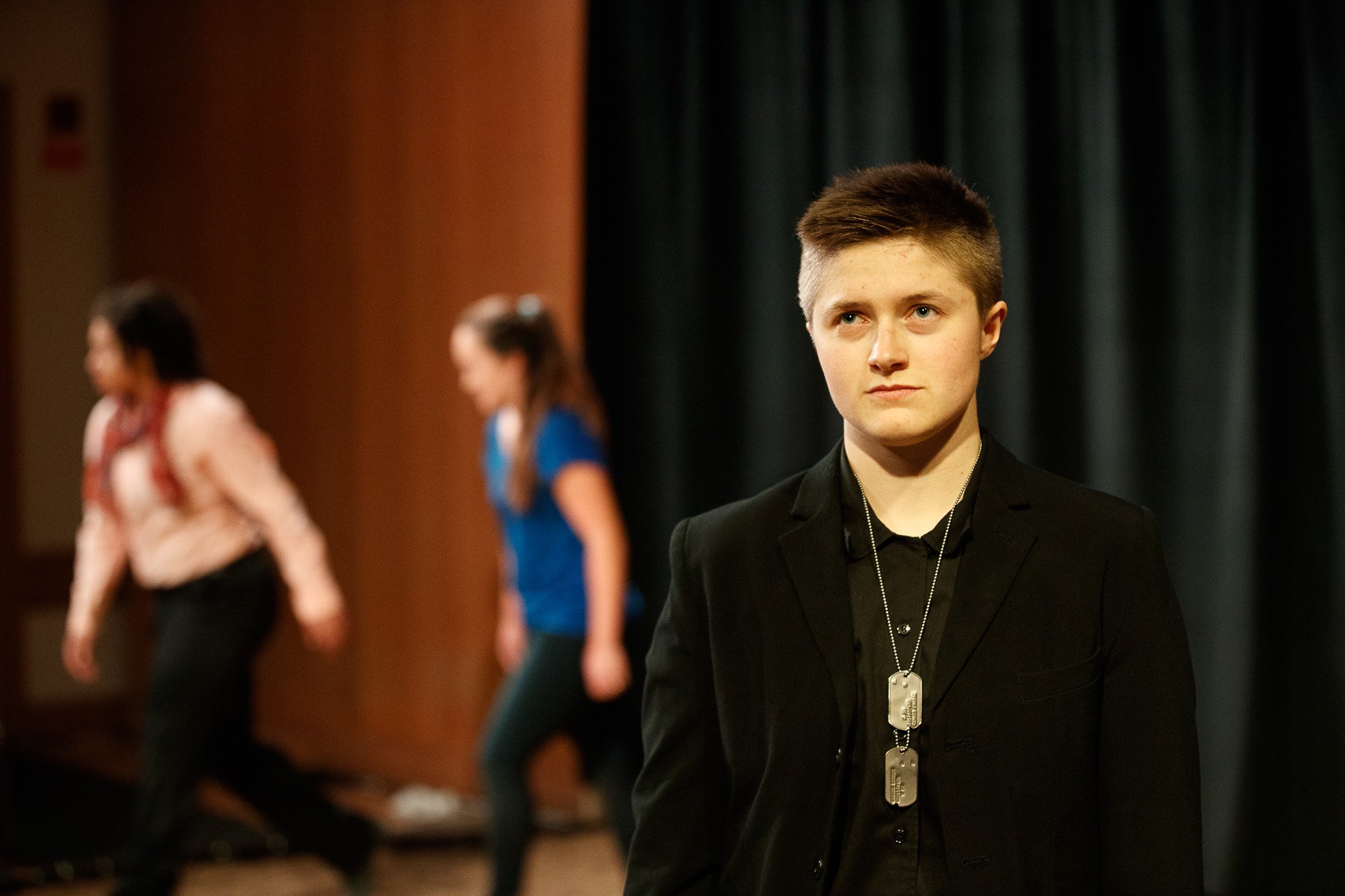![[wit]'s production of 'Hamlet' brings 'scorched earth' to a whole new level 1 [wit]'s production of 'Hamlet' brings 'scorched earth' to a whole new level](https://stanforddaily.com/wp-content/uploads/2017/11/23632071_10155654550011539_1477175965801185680_o-600x400.jpg)
There’s a lot of theater on campus this year, let alone this quarter, and I try to see all of it. Over the past two nights, those who know me might be worried or even amused to see me, quite literally, screeching about a window and a pile of dirt (in the Asian American Theater Project’s production of “The Chronicles of Kalki” and [wit]’s production of “Hamlet,” respectively). Something was so tangible, so visceral about these two set choices – the former a framed visual separation of inner and outer worlds, the latter a physical representation of what was once whole – that made me so excited. Something about the hollow knocking at the glass pane, the voices muffled yet reverberant around the bare blackbox space, was chilling to me – a transcendence of the theater to real life. Something about the light gray gravel and dust, touched and irreversibly altered by each character that came onstage, allowed me to be so present in the moment – a welcome change from the ever-distinct Elliott Programming Center floor that graces every production in the space.
“Hamlet,” directed by Ezra Jackson-Smith ‘18 as his TAPS capstone project, tells the classic Shakespeare tale of the Hamlet, the young Prince of Denmark (Tyler Miller ’19) who must avenge the death of his late father (Jackson-Smith) – the former king – by killing his uncle, the current king (Regan Lavin ’21). The aforementioned choice of dirt floor was a fascinating choice (although I would have preferred a darker color of dirt as I found the color contrast a little visually jarring, but all things considered, it was quite a feat), and [wit]’s production doesn’t choose to glamorize or adapt this story in any conventional way, such as distinctly setting it in a specific time and place, which often allows for some sort of political or societal commentary. There’s really no need to actually set it somewhere in particular unless there’s a certain message that is desired, or at least to help audiences that are unfamiliar with Shakespeare’s oeuvre. At times, I did feel somewhat ungrounded – the amalgam of contemporary clothing crossed with the classical instrumental music between scenes and mixed combination of ornate furniture and simple set pieces threw off my focus. Nevertheless, the sparse set pieces – a couple chairs here and there, a table, a prayer bench, a headstone – served to the production’s benefit, allowing for a lot of movement and a surprising lack of constriction on the thrust stage. Directors often struggle to allow characters to roam or don’t know what to do with so much space, with the concern that at times, certain audience members won’t see the faces of some actors. This is also what I love about the thrust stage set-up – it creates an immersive experience, as if viewers are sitting directly in the play’s world – and Jackson-Smith utilizes it extremely effectively.
The conceit of this production of “Hamlet” is that it utilizes an all-female and -non-binary cast. This decision more so aligns with [wit]’s mission to “[elevate] female and non-binary voices in theater” rather than directly work to create a discussion or interplay between gendered forces in the play, as few or none of the roles were meant to be played as gender-swapped. Again, this is not necessarily a fault of the production – simply an artistic choice. Even without gender-swapping or gender-changing roles, I do believe there is potential with “Hamlet” to bring up these certain – and rather notable – dynamics, including Hamlet’s treatment of Ophelia (Lili Lim MA ’18) and his Oedipal complex with Gertrude (Charlie Dubach-Reinhold ’19). I felt an inkling of this happening, but I yearned for more – especially in the scenes with Hamlet as he confronts Gertrude about his father’s death, and a particularly haunting rendition of Ophelia’s madness.
Strong performances by Miller as Hamlet, Lavin as Claudius, Lim as Ophelia and Eve La Puma ’20 as a delightfully obnoxious Polonius and the anchoring comic relief of the show (Polonius snacking loudly was a source of amusement that I was not prepared for, but ultimately very entertained by) helped to shuffle the nearly three-hour production along through its lengthy narrative. With Shakespeare on a nearly-barren stage, it’s often quite difficult to get across what you’d like, let alone the plot of the actual story – especially to audiences from varied backgrounds. [wit]’s production is able to very effectively and simply convey the story, even if there didn’t seem to be any apparent sociopolitical angle. Shakespearean productions often run into the issue of having such a long production simply drag on and on – and at times “Hamlet” does this simply by virtue of the textual content and Shakespearean language, but not to the extent that it really pulls you out of the production. The diversity in both onstage bodies – including a large presence of women of color – along with varied levels of experience was very enjoyable and great to see in a Stanford production, considering the often heavy-handed and dominant presence of Ram’s Head. Sometimes you just have to take time out of your busy pre-Thanksgiving week, sit down and watch a show or two. You have to seek to be challenged, coming into the theater with the expectation that you want to be actively watching, seeking new worldviews and ways of thinking. In the case of “Hamlet,” this comes artistically – and it really is worth it.
“Hamlet” is finishing its run at the Elliott Programming Center at 7:30 p.m. on Nov. 17 and 2 p.m. on Nov. 18 and 19.
Contact Olivia Popp at oliviapopp ‘at’ stanford.edu.
This article has been updated to reflect students’ current identities.
